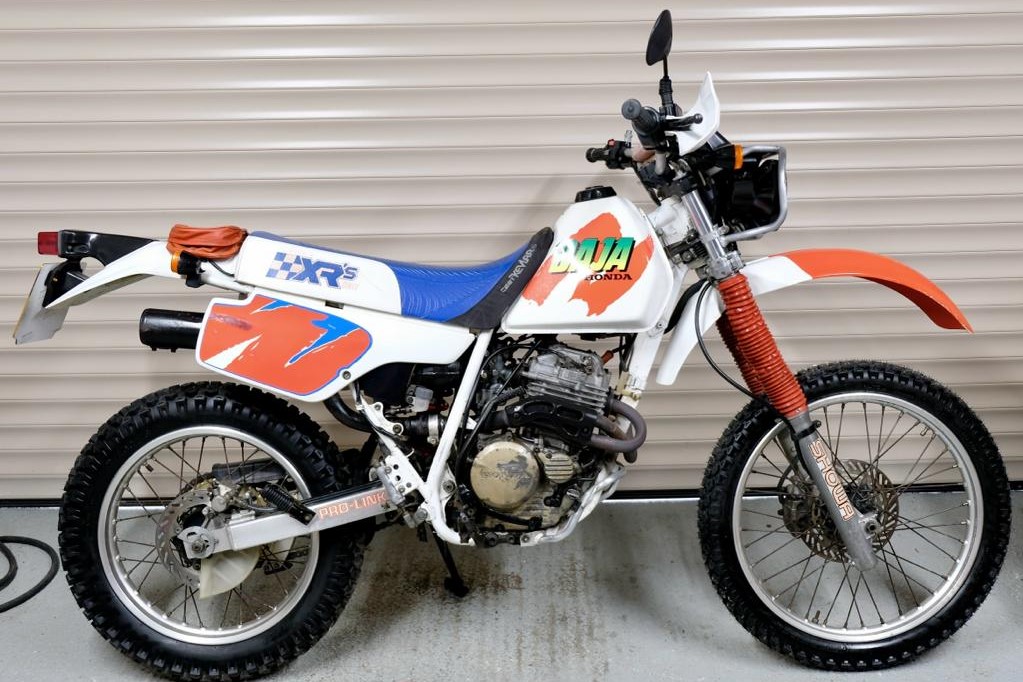Honda XLR 250 Baja Review: Why This Rare Dual-Sport Still Excites Riders
The Honda XLR250 Baja. The name itself conjures images of sun-baked landscapes, endless trails, and the spirit of adventure. While not as ubiquitous as its XR counterparts, the XLR250 Baja holds a special place in the hearts of dual-sport enthusiasts. This review delves into why this rare machine continues to excite riders, exploring its strengths, weaknesses, and what makes it a compelling choice for those seeking off-road thrills with on-road practicality.
A Glimpse into the Baja’s History
Before diving into the specifics, it’s important to understand the context of the XLR250 Baja. It was a Japanese-market model, primarily produced from the late 1980s to the early 1990s, and therefore, not widely available in North America or Europe. The “Baja” designation signifies its design influence, inspired by the demanding conditions of the Baja 1000 desert race. This meant a focus on:
- Extended Fuel Range: Larger fuel tank for longer rides.
- Enhanced Lighting: Powerful headlight and taillight for improved visibility.
- Off-Road Capability: Robust suspension and durable construction.
Performance and Handling: Off-Road Prowess
The heart of the XLR250 Baja is its reliable, air-cooled, four-stroke, 249cc single-cylinder engine. While not a powerhouse, it provides ample torque for tackling challenging terrain and a manageable power delivery that makes it forgiving for less experienced riders.
Engine Characteristics:
- Torquey, responsive engine suitable for various terrains.
- Air-cooled design, simplifying maintenance.
- Reliable and durable, known for longevity.
Suspension and Handling:
- Long-travel suspension absorbs bumps and obstacles effectively.
- Light and nimble handling contributes to its off-road agility.
- Comfortable for extended rides, both on and off-road.
On-Road Capabilities: Balancing Adventure with Daily Use
While designed for off-road dominance, the XLR250 Baja is also surprisingly capable on the pavement. Its relatively low weight and comfortable ergonomics make it suitable for commuting and weekend rides.
Street-Legal Features:
- Headlight, taillight, and turn signals for road legality.
- Horn and mirrors for safe road use.
- Reasonable seat height for comfortable riding.
Limitations:
- Not a highway cruiser due to the engine’s displacement.
- Braking performance, while adequate, may be less than modern bikes.
Key Features That Set the Baja Apart
The XLR250 Baja boasts several features that contribute to its appeal:
- Large Fuel Tank: Provides impressive range, enabling longer adventures without frequent fuel stops.
- Powerful Lighting: Ensures excellent visibility in low-light conditions, crucial for both off-road and on-road riding at night.
- Durable Construction: Built to withstand the rigors of off-road riding, with robust components and a resilient frame.
- Classic Styling: Its iconic design and Baja-inspired graphics give it a timeless appeal.
The Challenges of Owning an XLR250 Baja
Owning a rare, older motorcycle comes with its own set of challenges:
- Parts Availability: Finding replacement parts can be more difficult than for more common models.
- Maintenance: Requires a good understanding of motorcycle mechanics or a willingness to learn.
- Resale Value: While desirable, the resale value can fluctuate based on condition and rarity.
Who is the Honda XLR250 Baja For?
The XLR250 Baja is ideal for:
- Experienced Riders: Appreciating the bike’s heritage and off-road capabilities.
- Beginner Riders: Looking for a forgiving and manageable dual-sport.
- Collectors: Seeking a rare and iconic motorcycle.
- Those Seeking Adventure: Looking for a reliable and capable machine for exploring both on and off-road.
Conclusion: A Timeless Classic
The Honda XLR250 Baja, despite its age and rarity, continues to excite riders for a multitude of reasons. Its robust engine, capable suspension, and classic design combine to create a machine that is both fun to ride and capable of tackling a wide range of terrains. While owning one requires some dedication, the rewards are well worth the effort. If you are seeking a dual-sport motorcycle that embodies the spirit of adventure and offers a unique riding experience, the XLR250 Baja should be at the top of your list. Its enduring popularity is a testament to its quality, performance, and the lasting legacy of the Baja name.
Frequently Asked Questions (FAQs)
Q1: How difficult is it to find parts for the XLR250 Baja?
A: Parts availability can be challenging. You may need to rely on online marketplaces, specialized motorcycle part suppliers, or salvage yards. Planning ahead and stocking up on essential parts is recommended.
Q2: Is the XLR250 Baja suitable for a beginner rider?
A: Yes, the XLR250 Baja is a great option for beginner riders. Its manageable power delivery, comfortable ergonomics, and forgiving handling make it a confidence-inspiring machine to learn on.
Q3: What is the fuel range of the XLR250 Baja?
A: The large fuel tank provides a generous fuel range, typically allowing for over 200 miles of riding, depending on riding style and terrain.
Q4: How does the XLR250 Baja compare to the Honda XR250R?
A: The XR250R is a more off-road-focused motorcycle, while the XLR250 Baja is a dual-sport. The Baja has lights, a larger fuel tank, and street-legal equipment, making it more suitable for both on-road and off-road use. The XR250R is a lighter and more aggressive off-road machine.
Q5: Is the XLR250 Baja expensive to maintain?
A: Maintenance costs can be relatively low due to the simple, air-cooled engine design. However, finding specific parts can increase costs. Regular maintenance, such as oil changes and valve adjustments, is crucial for keeping the bike running smoothly.




